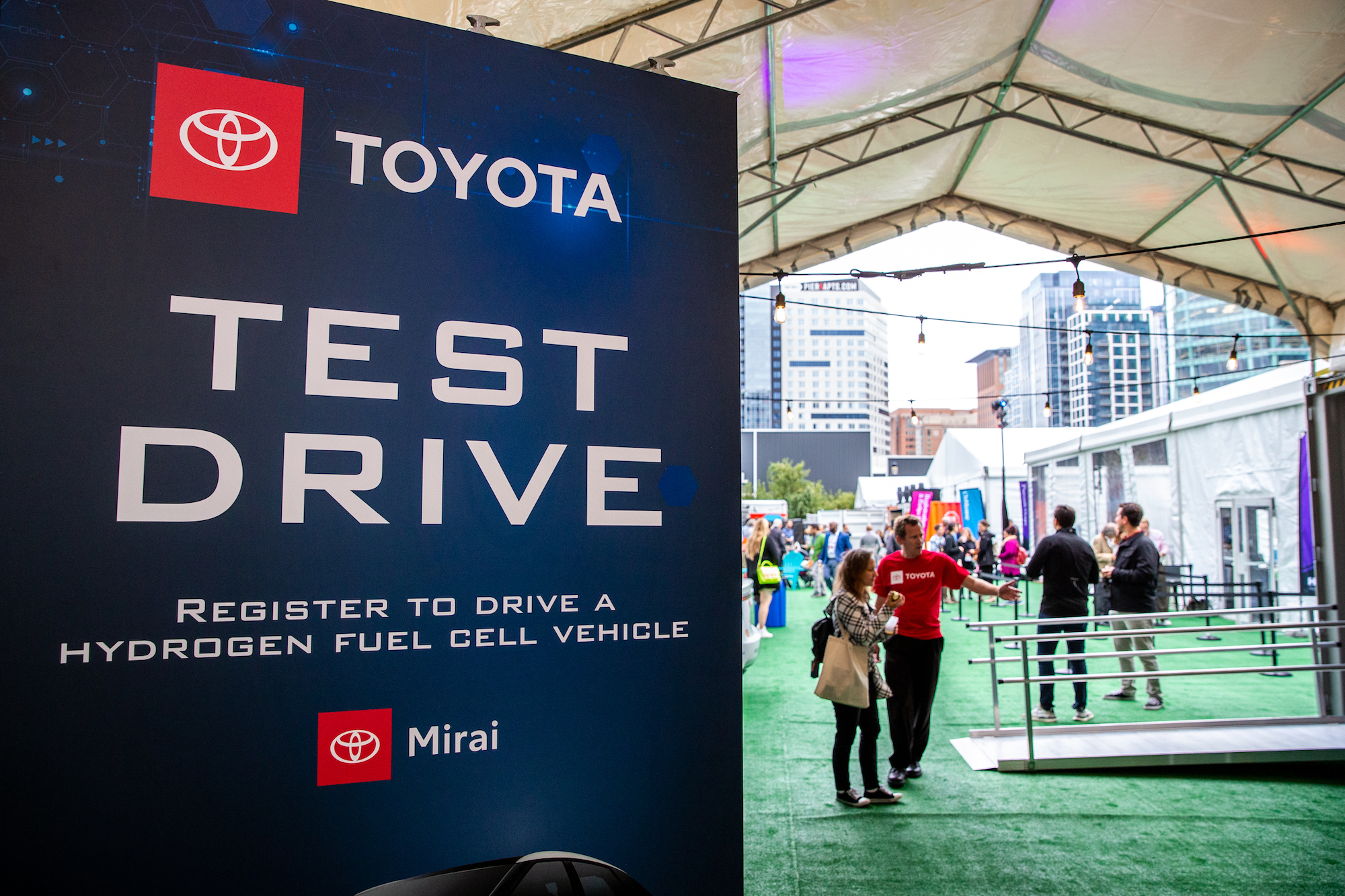As we envision the future of transportation, there’s one thing most can agree on: arriving at the next generation of mobility will require making a commitment to sustainable energy. With motorists demanding newer, environmentally conscious forms of transportation, hydrogen is a proven source of energy that could provide the clean fuel we need to power forward.
At the 2019 HubWeek Fall Festival in Boston’s Seaport, you may have investigated the potential of hydrogen fuel-cell electric vehicles (FCEVs) by learning about the Toyota Mirai. Missed out? Not to worry — we’ll take you through exactly what a hydrogen fuel-cell vehicle is and how it can lead us to a new era in transportation.
THE LOWDOWN ON HYDROGEN
We’re all familiar with hydrogen, right? It’s virtually everywhere: in water, plants, manure, and more. Hydrogen has been used throughout history to power everything from forklifts to spacecrafts.
The first fuel cell generator was created by Francis Thomas Bacon in 1939, producing a mere 5kW of power. NASA adopted fuel cell technology in the 1950s and 60s to power onboard electronics and water for America’s Gemini and Apollo spacecrafts. In the early 2000s, the German Navy utilized fuel cell technology to power submarines.
Lighter than air and incredibly pure, hydrogen is highly efficient and leaves no carbon emissions behind when used in a fuel cell. However, hydrogen binds to almost everything, so separation is critical before it can be used as fuel. There are a few ways this can be accomplished:
- Steam reforming - Starting with liquids or gasses that contain hydrogen (like natural gas or sustainable biogas), steam at a high temperature in a reformer reacts with the fuel and leaves hydrogen behind.
- Gasification - In gasification, organic materials (think crops or livestock waste) are placed under high temperatures and separated into hydrogen.
- Electrolysis - The process of separating water into its primary elements (hydrogen and oxygen) is known as electrolysis. An electrical current — which can be sourced from clean, renewable energy like wind, solar, or hydro — passes through water to extract hydrogen.
POWERING TRANSPORTATION
So once hydrogen has been isolated, how does the process of harnessing that power in a fuel cell work?
After hydrogen has been pumped into an FCEV, it is stored in carbon-fiber-reinforced fuel tanks until it’s time to begin the process of creating electricity. Fuel cell systems generate power by combining hydrogen with oxygen from the outside air. Individual fuel cells designed for use in vehicles typically don’t produce enough energy to power a vehicle alone, so multiple cells can be assembled in what’s called a “fuel cell stack.”
Air travels through the vehicle’s intake grilles to its fuel cell stack, where it meets up with the hydrogen from the vehicle’s fuel tanks. A chemical reaction takes place, creating electricity that will power the vehicle via the motor when the driver puts his or her foot on the accelerator. The resulting byproduct is simply water, which exits the vehicle through the tailpipe.
System components for an FCEV also include a high-output battery. The battery allows for regenerative braking, which converts the motion of a car and returns it as electrical power to the vehicle, increasing its efficiency. Batteries also provide support for high-power demands like accelerating.
DRIVING FORWARD WITH TOYOTA MIRAI
Answering the call for newer, cleaner forms of transportation is the Toyota Mirai (Did you know? Mirai means “future” in Japanese). Toyota debuted the Mirai in 2015 as the first production FCEV offered for sale to retail customers in North America.
Toyota is pushing further beyond zero environmental impact with the goal of achieving a net positive impact through its Environmental Challenge 2050. A cornerstone of the challenge is to reduce vehicle CO2 emissions by 90% compared to Toyota’s 2010 global level. Utilizing hydrogen as a fuel source is a key way to attain this milestone.
In October 2019, Toyota introduced the second-generation Mirai, rebooted as a premium sedan with cutting-edge design, technology and driving performance. An improvement in fuel cell system performance and increased hydrogen storage capacity target a 30% increase in range. The second-gen Mirai is expected to become available in late 2020.
As more FCEVs enter the market over the coming years, and as the cost, size and weight of fuel cell systems continue to decrease and fueling infrastructure grows, fuel cell electric technology could one day be as common as hybrid electric technology. Wider adoption of hydrogen-powered fuel cell electric vehicles could result in reduced emissions of greenhouse gases, ultimately creating a cleaner, healthier environment for all.
